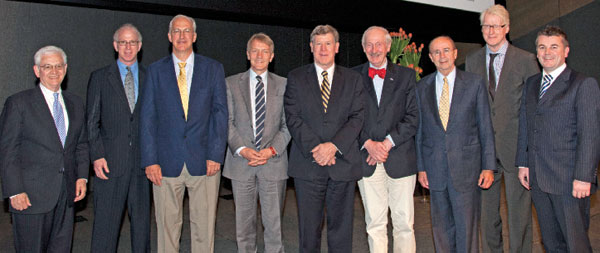Phi Stands for Prostate Health Index

Phi is the pro-PSA divided by the free-PSA times the square root of the total PSA.
“Phi has fewer false positives than existing tests and is more specific for aggressive prostate cancer,” Dr. Catalona said.
Dr. Catalona launched the implementation of testing for phi at the Australasian Prostate Cancer Conference.
Although the test is still being assessed by the FDA in the US, it has been approved for use in Australia and the European Union, as has pro-PSA.
Dr. Catalona explained in his presentation that phi has fewer false positives than existing tests and is more specific for aggressive prostate cancer.
“Total PSA’s diagnostic accuracy for cancer is about 55 per cent. The free-PSA to total-PSA comparison raises accuracy to about 65 per cent. Phi takes it to about 75 per cent,” Catalona said.
![]()
How the Prostate Health Index (PHI) Works
Phi works by measuring an immature form of PSA, which is then mathematically combined with free-PSA and total PSA to determine the probability of cancer in the patient.
Unlike existing tests, phi is likely to detect a Gleason 7 or higher before a biopsy.
“This predictive ability for cancer aggressiveness makes it significantly superior to previous PSA testing and provides additional information for making a decision about biopsy,” Catalona said.
In his presentation, Dr. Catalona used an example of two patients.
Example For Use
Both men, in their 50s, had a PSA of 4 ng/mL. Then, a phi score was figured for both of them. One man’s phi score was 23 and that result meant he had less than a 3 per cent chance of having a potentially life-threatening Gleason 7 prostate cancer.
The second man had a phi of 52, which meant a 22 per cent chance of his having a Gleason 7 tumor. That information would most likely influence a decision for biopsy.
The prostate health index may be useful in prostate cancer screening to decrease unnecessary biopsies in men 50 years old or older with prostate specific antigen 2 to 10ng/mL and a negative digital rectal exam.
Responding to Dr. Catalona’s intro – duction of phi, Ken Sikaris, a pathologist in Australia who has been working with PSA for 20 years, said, “Personally, I would never have a PSA alone. I would have free to total and if I wanted the best parameter available, I would have phi.”
The phi study from Dr. Catalona and his collaborators was published this year in the Journal of Urology.
Phi and pro-PSA testing will only be available in the US when they are FDA approved.

Journal of Urology











